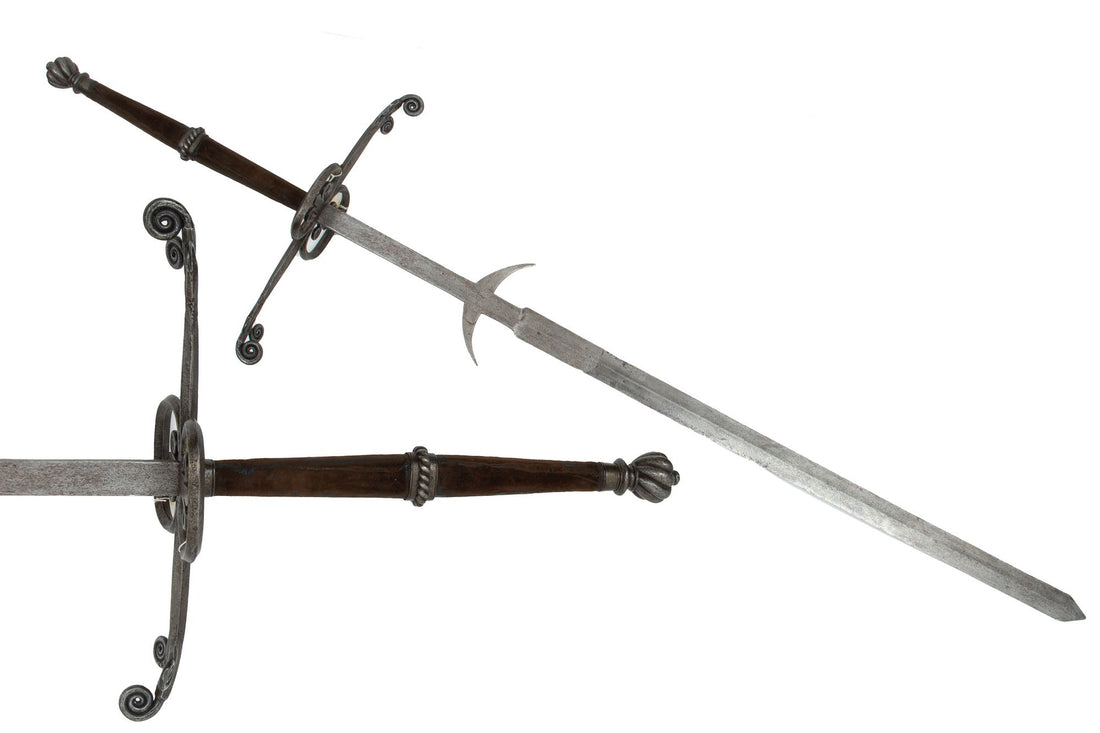When delving into the fascinating world of historical weaponry, one cannot overlook the awe-inspiring presence of the Zweihänder. This German two-handed sword, renowned for its sheer size and weight, stands as a testament to the craftsmanship and martial prowess of a bygone era. In this blog, we will unravel the mystique surrounding the Zweihänder, exploring its origins, design, and the formidable impact it had on the battlefields of the 16th century.
Origins and Historical Context:
The roots of the Zweihänder can be traced back to the heart of Europe during the Renaissance, a period marked by intense military conflicts and the rise of skilled infantry units. Emerging in the Holy Roman Empire, this imposing sword found favor among the Landsknechts, a formidable group of mercenaries known for their distinctive attire and deadly efficiency on the battlefield.
The term "Zweihänder" itself translates to "two-hander" in German, underlining the necessity of employing both hands to wield this massive weapon effectively. The Zweihänder served as a symbol of strength and authority, reflecting the turbulent times in which it thrived.
Design and Dimensions:
What sets the Zweihänder apart is its colossal size, with blade lengths ranging from 4 to 6 feet (120 to 180 cm). The blade itself, forged with precision and strength, could weigh between 5 to 7 pounds (2.3 to 3.2 kg) or even more. This design allowed for a versatile array of combat techniques, combining cutting and thrusting motions to devastating effect.
The grip of the Zweihänder accommodated the use of both hands comfortably, providing the wielder with increased control and stability. The hilt often featured a complex system of rings and guards, enhancing the sword's defensive capabilities while ensuring the warrior could manipulate the weapon with agility.
Battlefield Dominance:
The Zweihänder's legacy is deeply intertwined with the Landsknechts, who wielded these colossal swords with unparalleled skill and precision. On the battlefield, the sheer size and weight of the Zweihänder made it a formidable force, capable of cleaving through enemy lines and delivering devastating blows. The length of the sword allowed Landsknechts to strike at opponents from a distance, maintaining a strategic advantage over adversaries with shorter weapons.
The Zweihänder's effectiveness was not limited to offensive capabilities. With its intricate hilt design, the sword offered exceptional protection, deflecting enemy strikes and providing a robust defence against various attacks. This versatility on the battlefield solidified the Zweihänder's reputation as a weapon of choice for those seeking dominance in hand-to-hand combat.
Legacy and Influence:
While the Zweihänder's prominence waned with the evolution of warfare and the advent of firearms, its legacy endures in historical records, art, and modern depictions of medieval combat. The impact of the Zweihänder is evident in the lasting fascination it holds for enthusiasts, historians, and collectors alike.
Today, replicas and recreations of the Zweihänder can be found in museums and private collections, serving as tangible reminders of a time when martial skill and weaponry were paramount. The sword's influence extends to various forms of media, with movies, books, and video games often featuring characters wielding this iconic weapon, further cementing its place in popular culture.
Conclusion:
In the annals of history, few weapons command the attention and respect that the Zweihänder does. Its massive size, intricate design, and undeniable impact on the battlefield have secured its place as one of the heaviest and most formidable swords in history. The legacy of the Zweihänder endures, captivating the imagination of those intrigued by the martial history of the Renaissance and the warriors who brandished this mighty weapon in the name of power and glory.


1 comment
I’m really interested in this sword